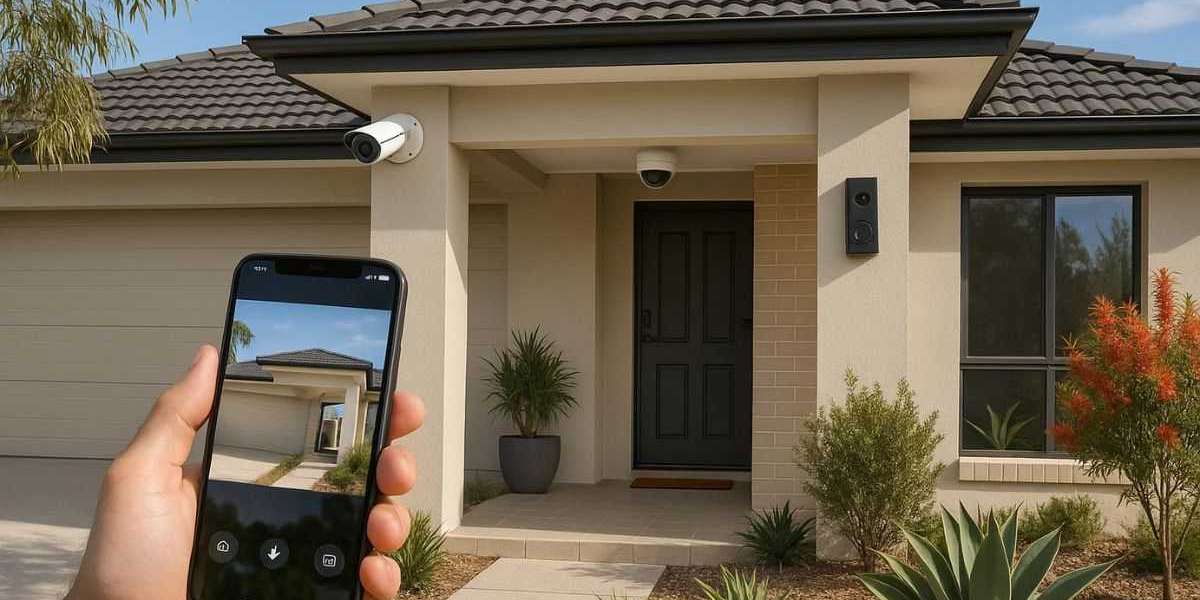Security has become an essential concern for homeowners across Australia, especially in suburban areas. With increasing reports of thefts, trespassing, and property vandalism, investing in home security cameras is more than a luxury—it’s a necessity. This detailed guide explores the top options for security cameras suited for Australian suburbs, the features to consider, and tips to maximize your home's safety.
1. Why Home Security is Vital in Australian Suburbs
While suburban areas are often perceived as peaceful, they aren’t immune to criminal activity. The laid-back environment can sometimes provide opportunities for intruders who assume homes are left unattended. Installing surveillance systems acts as a powerful deterrent and provides homeowners with peace of mind. Whether it’s keeping an eye on parcel deliveries or monitoring unusual movement, home security cameras are a modern-day must-have.
2. Understanding the Types of Security Cameras
Before investing, it’s crucial to understand the types of cameras available. From wired to wireless systems, bullet to dome cameras, and doorbell units to 360° rotating cams—each type serves a different purpose. Wired systems are known for their stability and image quality, while wireless options offer ease of installation and flexible positioning. Choosing the right type depends on your home layout and specific security concerns.
3. Smart Features That Enhance Home Protection
Modern cameras are loaded with smart features such as motion detection, two-way audio, AI face recognition, and even night vision. These functions not only increase effectiveness but also integrate with home automation systems. For example, AI motion detection can reduce false alerts by distinguishing between a swaying tree and a human intruder—making surveillance more intelligent and efficient.
4. Importance of Camera Placement in the Suburbs
Strategic placement plays a pivotal role in how well your system performs. In suburban homes, popular entry points like front doors, driveways, and backyard gates should always be monitored. Overlooking blind spots can render a surveillance system ineffective. Proper installation ensures maximum visibility and reduces vulnerabilities, especially in larger suburban properties.
5. Weather-Resistant Cameras for Harsh Conditions
Australian suburbs often face extreme weather—from intense summer heat to heavy rainfall. Therefore, selecting weatherproof security cameras with IP66 or IP67 ratings is essential. These cameras are built to endure environmental stress, ensuring continuous operation regardless of weather. A camera that fails during a storm won’t help much in protecting your home.
6. Wired vs. Wireless: Which is Better for Suburban Homes?
Both wired and wireless cameras have pros and cons. Wired systems offer reliability, uninterrupted power, and constant connectivity, making them ideal for long-term installation. However, they can be difficult to install. Wireless systems, on the other hand, are easier to set up and move. For suburban homes, combining both systems often yields the best results.
7. Storage Options: Local vs. Cloud Recording
Security cameras record a lot of data, and deciding between local and cloud storage is vital. Local storage (such as SD cards or DVRs) offers privacy and no monthly fees but risks data loss if stolen or damaged. Cloud storage provides remote access and backups but may come with subscription costs. Suburban homeowners often prefer cloud storage for its convenience and scalability.
8. Integration with Home Automation Systems
Homeowners looking for complete control can integrate their security cameras with smart home systems. Platforms like Google Home, Amazon Alexa, and Apple HomeKit allow for seamless control using voice or apps. For instance, users can receive real-time alerts, view footage, or activate lights—all with a single tap or command.
9. Cost Considerations: Balancing Budget and Security
Installing a robust security system doesn’t always mean spending a fortune. Budget-friendly options still offer excellent features like motion alerts and HD video. However, more advanced models with AI and cloud storage will cost more. It’s essential to balance your budget with the level of security required, especially when safeguarding a larger suburban property.
10. Professional Installation vs. DIY Setup
DIY camera systems are increasingly popular thanks to user-friendly interfaces. However, for complex or larger homes, professional installation is often the better choice. Experts understand optimal camera placement, wiring, and network settings—ensuring the system functions correctly from day one. If you're looking for experienced professionals in this domain, check out this camera installation team in Australia for tailored solutions.
11. Monitoring Services: Added Protection Around the Clock
Some homeowners opt for 24/7 monitoring services. These services ensure constant supervision of your camera feeds, providing instant alerts to you and emergency responders. While monthly fees are involved, many find it a worthwhile investment—especially in regions with higher incident rates.
12. Legal Considerations in Home Surveillance
In Australia, privacy laws govern the use of home security cameras. You must ensure your cameras don’t record areas beyond your property line, such as public sidewalks or a neighbor’s backyard. Understanding these legal aspects will keep you compliant and avoid disputes or penalties.
13. Camera Maintenance Tips for Optimal Performance
Just like any other tech device, security cameras need periodic maintenance. Clean the lenses regularly, check for firmware updates, and test connectivity. Dust, spider webs, or outdated software can compromise performance. Suburban environments often have more exposure to outdoor elements, making maintenance even more critical.
14. The Rise of AI-Powered Security Systems
AI-powered systems are changing the game. Features like human detection, facial recognition, and license plate reading are no longer reserved for commercial setups. Suburban homeowners are increasingly adopting these intelligent tools for a higher level of precision and safety. These systems offer a proactive approach—alerting you before a potential incident occurs.
15. Customized Security Solutions for Your Home
Every home is unique. Some require front-facing cameras for street monitoring, while others may prioritize internal surveillance. Whether you're in a single-level home or a two-story dwelling, getting custom security services tailored to your needs can greatly improve safety. A great place to start is by exploring these specialized service packages available in Australia, perfect for modern suburban homes.
Frequently Asked Questions (FAQs)
1. Do I need internet for my home security cameras to work?
Some systems offer local storage and don’t require internet, but remote viewing and cloud backups need connectivity.
2. How many cameras do I need for a suburban house?
It depends on the size, but typically 4–6 cameras are ideal to cover entrances, driveways, and backyard areas.
3. Can my security camera record at night?
Yes, most modern cameras feature infrared night vision or color night mode for low-light recording.
4. Will a fake camera deter burglars?
Possibly, but experienced intruders can spot them. It’s safer to invest in real, functional units.
5. Are battery-powered cameras reliable?
Yes, especially for temporary setups or hard-to-wire areas. However, they require regular charging or battery replacement.
6. Is professional installation worth the cost?
If you're not tech-savvy or have a large home, professional setup ensures better coverage and functionality.













